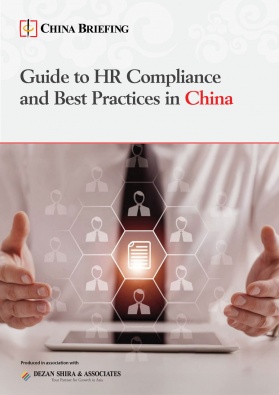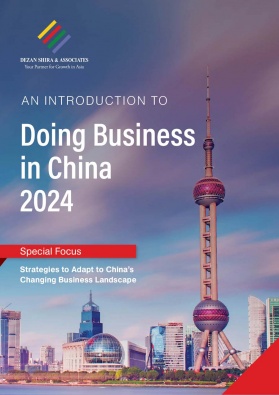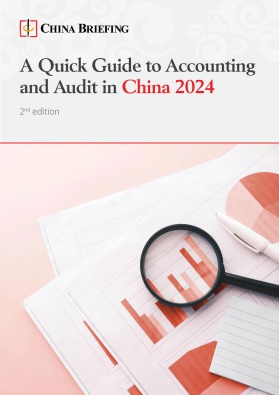Decoding China’s H1 2024 Foreign Direct Investment (FDI) Performance
China’s actual utilized foreign direct investment (FDI) in H1 2024 reached US$69.93 billion, a 29.1 percent decrease from the previous year. Despite this decline in investment amount, the number of new foreign-invested enterprises (FIEs) rose by 14.2 percent. Notably, FDI from Germany and Singapore surged, particularly in high-tech and green sectors. In this article, we navigate China’s FDI trends by delving into the H1 2024 data.
According to recent data from China’s Ministry of Commerce (MOFCOM), the country’s foreign direct investment (FDI) performance in H1 2024 presents a mixed picture. While the actual utilized FDI amount declined by 29.1 percent year-on-year to RMB 498.9 billion (equivalent to US$69.93 billion), the number of newly registered foreign-invested enterprises (FIEs) reached 26,870, reflecting a 14.2 percent increase year-on-year. Notably, investment from Germany and Singapore in China increased by 18.1 percent and 10.5 percent, respectively, during the January to June period, highlighting the strategic focus of these nations in the Chinese market.
In this article, we delve into China’s H1 2024 FDI data, examining the latest trends and challenges. We also explore strategic opportunities for foreign investors within the current economic landscape. As China prioritizes attracting investment in high-tech manufacturing, modern services, and green energy, understanding these dynamics is crucial for making informed decisions in this evolving market.
Manufacturing and professional technical services witnessed FDI uptake
In the first half of 2024, China’s manufacturing sector experienced a notable increase in FDI, attracting RMB 141.9 billion (US$19.89 billion). This influx represented 28.4 percent of the total FDI, marking an improvement of 2.4 percentage points compared to the previous year. The uptick in manufacturing FDI underscores the sector’s robust appeal to international investors, driven by China’s ongoing industrial advancements and supportive policies aimed at enhancing the sector’s global competitiveness.
High-tech manufacturing, a key focus area for China’s economic strategy, also saw positive developments. FDI in this segment reached RMB 63.8 billion (US$8.94 billion), which constituted 12.8 percent of the total FDI for the period. This figure reflects a year-on-year increase of 2.4 percentage points, indicating growing foreign interest in China’s high-tech and innovation-driven industries. This growth aligns with China’s broader push towards advancing technological capabilities and fostering innovation as part of its economic transformation.
Particularly noteworthy are the substantial FDI inflows into specific segments such as medical instrument manufacturing and professional technical services. In the medical instrument sector, FDI surged by 87.5 percent, highlighting the increased foreign investment in healthcare technology and medical innovations. This growth reflects the sector’s expanding role in China’s healthcare system and its attractiveness to global investors seeking to capitalize on the country’s advancing medical infrastructure.
Similarly, the professional technical services sector saw a significant 43.4 percent increase in FDI, underscoring the rising demand for specialized services and expertise. This growth points to a broader trend of increased foreign engagement in sectors that support technological and professional advancements within China.
FDI from Germany and Singapore surged
Between January and June 2024, investment from Germany and Singapore in China increased by 18.1 percent and 10.5 percent, respectively. This growth highlights a rising interest from these nations even as overall FDI experienced a broader decline.
In the first half of 2024, Germany’s direct investment in China surged to €7.3 billion (US$8.15 billion), surpassing the total investment for the entire year of 2023. This dramatic increase, particularly evident in the second quarter when investments rose to €4.8 billion (US$5.36 billion) from €2.48 billion (US$2.77 billion) in the first quarter, underscores a robust confidence among German enterprises in the Chinese market.
The surge is largely attributed to significant investments from major German automotive manufacturers, who are expanding their presence in China and reinvesting profits into the burgeoning electric vehicle (EV) and high-tech sectors. Germany has long been a leading investor from Europe, accounting for over half of the EU’s investments in China in recent years. This growing investment trend reflects Germany’s strategic focus on China’s transformative economic landscape, particularly in green energy, digital economy, and advanced manufacturing.
The rising investment from Singapore, on the other hand, is particularly notable in light of recent developments, such as the 2024 China-Singapore Economic Cooperation Forum held in Singapore on February 1, 2024. This forum, co-hosted by the China Council for the Promotion of International Trade (CCPIT) and the Singapore Business Federation, aimed to bolster business collaboration between the two countries. The forum highlighted the deepening economic relationship, with China maintaining its position as Singapore’s largest trading partner and Singapore continuing to be a major source of new investment for China. This mutual interest in enhancing economic cooperation reflects a shared commitment to increasing reciprocal investment and fostering stronger trade connections.
|
China’s Top FDI Sources, 2014-2023 (US$, 100 Million) |
||||||||||
| Country/Region | 2023 | 2022 | 2021 | 2020 | 2019 | 2018 | 2017 | 2016 | 2015 | 2014 |
| Hong Kong, China | 1,112.0 | 1,372.4 | 1,317.6 | 1,057.9 | 963.0 | 899.2 | 945.1 | 814.7 | 863.9 | 812.7 |
| Singapore | 98.0 | 106.0 | 103.3 | 76.8 | 75.9 | 52.1 | 47.6 | 60.5 | 69.0 | 58.3 |
| Japan | 39.0 | 46.1 | 39.1 | 33.7 | 37.2 | 38.0 | 32.6 | 31.0 | 31.9 | 43.3 |
| South Korea | 35.0 | 66.0 | 40.4 | 36.1 | 55.4 | 46.7 | 36.7 | 47.5 | 40.3 | 39.7 |
| United States | 34.0 | 22.1 | 24.7 | 23.0 | 26.9 | 26.9 | 26.5 | 23.9 | 20.9 | 23.7 |
| Germany | 19.0 | 25.7 | 16.8 | 13.5 | 16.6 | 36.7 | 15.4 | 27.1 | 15.6 | 20.7 |
| United Kingdom | 34.0 | 16.0 | 12.0 | 9.8 | 8.6 | 24.8 | 10.0 | 13.5 | 5.0 | 7.4 |
| France | 19.0 | 25.7 | 16.8 | 13.5 | 16.6 | 36.7 | 15.4 | 27.1 | 15.6 | 20.7 |
| Taiwan, China | 7.0 | 6.6 | 9.4 | 10.0 | 15.9 | 13.9 | 17.7 | 19.6 | 15.4 | 20.2 |
| Netherlands | NA | 44.9 | 11.1 | 25.5 | 18.0 | 12.7 | 21.7 | 5.6 | 7.5 | 6.4 |
| Switzerland | NA | 3.9 | 7.3 | 6.5 | 6.4 | 6.0 | 4.6 | 5.5 | 2.2 | 3.4 |
| Canada | 2.0 | 1.7 | 2.0 | 2.2 | 2.3 | 2.8 | 2.9 | 2.6 | 2.2 | 3.5 |
| Italy | NA | 1.5 | 1.8 | 2.0 | 1.9 | 2.3 | 1.9 | 2.2 | 2.5 | 3.7 |
| Source: National Bureau of Statistics,2024 | ||||||||||
How to read China’s recent decline in FDI inflow
The recent decline in overall FDI into China, while significant, is not necessarily a cause for alarm. It can be understood from multiple perspectives. Firstly, the reduction in FDI follows a decade of consistent growth. The decline observed from a high base can be considered a normal economic fluctuation to some extent.
Additionally, China’s investment landscape is evolving, with a shift towards greater emphasis on high-tech and innovative sectors. In the past, economic growth heavily relied on investment and exports, but it is gradually shifting toward a development model driven primarily by consumption and innovation. In this process, the investment structure and sectors attracting foreign capital are also changing, and inflows into certain traditional manufacturing and low-end service industries may have decreased. This structural optimization ensures that FDI into China will be of higher quality and more strategically aligned with China’s future economic goals.
Furthermore, the global economic slowdown, increased debt risks, and geopolitical turbulence have intertwined, leading to heightened complexity, severity, and uncertainty in the external environment. These factors have impacted the flow of foreign investment, prompting a reconfiguration and adjustment of FDI on a global scale. Developing countries like Vietnam and India, leveraging their advantages in labor costs and tax incentives, are competing with China in low-end manufacturing. Simultaneously, developed countries like the United States, capitalizing on their financial markets and technological innovation, have attracted substantial international capital inflows.
However, China has not given up its efforts to attract foreign investment. Despite facing challenges and difficulties, China’s potential and advantages in attracting FDI remain evident. Its position in the international supply chain is difficult to replace. The recent decision by Apple to shift part of its production capacity back to mainland China’s factories illustrates this point effectively. As the global economic situation gradually improves and China’s open-door policy continues to deepen, it is expected that China will remain a major FDI destination in the future.
China’s structural transformation and the implementation of an innovation-driven development strategy will provide foreign investors with broader development space and opportunities.
China’s efforts in ramping up FDI in 2024
Recognizing the importance of foreign investment to sustaining China’s economic growth, the Chinese government has made several efforts to improve its investment climate. Notable developments in 2023 included the State Council’s updated guidelines aimed at enhancing the foreign investment environment and extending tax incentives for foreign investors until the end of 2027. Additionally, new measures were introduced to encourage foreign investment in research and development centers and to regulate cross-border data transfers more clearly.
These steps reflect China’s ongoing attempts to attract and retain foreign capital amidst a complex and evolving geopolitical and economic landscape.
In 2024, China further ramped up efforts aimed at increasing openness and modernizing regulations. These reforms underscore China’s commitment to fostering a more transparent and investor-friendly environment.
Key among these updates is China’s New Company Law, effective July 1, 2024. This overhaul simplifies capital contribution requirements, tightens governance standards, and introduces flexible management structures to enhance corporate stability and investor protection. It streamlines procedures for company registration, equity transfers, and liquidation, reflecting China’s broader reform agenda to attract and retain foreign investment.
Complementing this, the new Catalogue for Guiding Industry Restructuring, effective February 1, 2024, focuses on high-tech and green industries. This Catalogue encourages investment in advanced technologies, sustainable practices, and modern service sectors while phasing out outdated and environmentally harmful industries. It directs foreign investors towards areas such as new energy vehicles, green technologies, and high-tech manufacturing, aligning with China’s economic shift towards innovation and sustainability.
Further signaling an evolving market, the State Council approved the 2024 Negative List for Foreign Investment Access on August 19, 2024. This new list eliminates restrictions on foreign investment in the manufacturing sector and further opens up telecommunications, education, and healthcare. Notable changes include the removal of foreign ownership caps in manufacturing, expanded investment opportunities in telecommunications through pilot programs, and potential relaxations in education and healthcare sectors. These measures aim to attract advanced foreign technologies, stimulate domestic industry innovation, and enhance the overall business environment.
While foreign businesses’ confidence cannot be restored overnight, the improving policy framework is definitely good news. These policies contribute to a dynamic and increasingly favorable environment for foreign investors seeking to capitalize on China’s growth opportunities.
Looking ahead
Looking ahead, China will remain a critical market for foreign investors. Sectors like advanced manufacturing, technology, and renewable energy are expected to drive future FDI growth, particularly as China reinforces its commitment to green development and innovation.
Nevertheless, investors also need to notice the shifting dynamic in FDI flows. The ASEAN-6 countries, which include Vietnam, Malaysia, the Philippines, Thailand, Indonesia, and Singapore, have experienced higher growth in FDI over the 2013-2023 period compared to China. Particularly, Vietnam has emerged as a notable recipient of FDI, benefiting from comparative advantages such as low-cost labor and geographic proximity during tensions between China and the US.
When making a choice between investing in China or other emerging Asia markets, investors are suggested to carefully assess the evolving economic landscape and policy environment before making significant commitments.
About Us
China Briefing is one of five regional Asia Briefing publications, supported by Dezan Shira & Associates. For a complimentary subscription to China Briefing’s content products, please click here.
Dezan Shira & Associates assists foreign investors into China and has done so since 1992 through offices in Beijing, Tianjin, Dalian, Qingdao, Shanghai, Hangzhou, Ningbo, Suzhou, Guangzhou, Dongguan, Haikou, Zhongshan, Shenzhen, and Hong Kong. We also have offices in Vietnam, Indonesia, Singapore, United States, Germany, Italy, India, and Dubai (UAE) and partner firms assisting foreign investors in The Philippines, Malaysia, Thailand, Bangladesh, and Australia. For assistance in China, please contact the firm at china@dezshira.com or visit our website at www.dezshira.com.
- Previous Article A Guide to Minimum Wages in China (As of August 28, 2024)
- Next Article China-Vietnam Relations: Trade Dynamics and Investment Outlook








